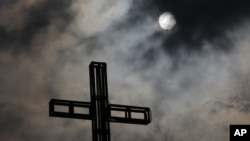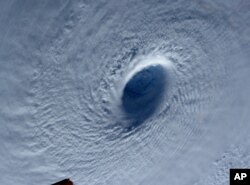Tropical Storm Maysak weakened before hitting the Philippines' northeastern coast Sunday, driving away thousands of Lenten holiday vacationers and tourists from beach and surfing resorts.
Alexander Pama, who heads the country's disaster-response agency, praised the public cooperation after vacationers heeded warnings and moved away from beach resorts. Maysak brought sporadic rains and whipped up waves, but no storm-related deaths have been officially declared by authorities so far.
Three men separately drowned in a beach resort and a river in northern Cagayan province Friday and Saturday, according to the Office of Civil Defense, which monitors storm casualties and damage, but Pama said authorities were still trying to determine whether the deaths were caused by the then-approaching storm.
One of the men apparently took part in a drinking spree before swimming in a river, where he was found dead, the Office of Civil Defense said. The two other men were swept away by strong currents.
"It's nice to say zero casualties, but it's too early to tell," Pama told reporters.
Maysak, first forecast as a supertyphoon, killed four people and destroyed hundreds of homes in Micronesia before blowing toward the Philippines, where officials mobilized to prevent a potential disaster had the storm retained its lethal power.
The storm was downgraded Sunday to a tropical depression.
Many Philippine TV and radio networks did not shut down as they traditionally do for the Easter holidays in the largely Roman Catholic nation to report on Maysak, which prompted officials to declare storm warnings and evacuate villagers from high-risk communities. The 120,000-strong military went on full security alert in the country's north to brace for any contingency.
The Philippines, which is lashed by about 20 storms each year, remains traumatized by Typhoon Haiyan, which killed more than 7,300 people and left a path of destruction in the country's central region in November 2013.









